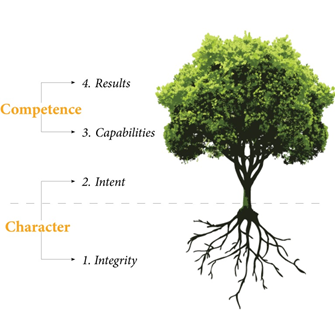The Failure to Execute
Ask Yourself
Which of these do leaders struggle with more?
Is it creating a strategy, or executing the strategy?
Every time we pose this question to leaders anywhere in the world, their answer is immediate:
“Execution!”
There are two principal things a leader can influence when it comes to producing results: your strategy (or plan) and your ability to execute that strategy.
Without execution, the breakthrough thinking breaks down, learning adds no value, people don’t meet their stretch goals, and the revolution stops dead in its track.
A poorly executed goal can have a domino effect on future execution. When leaders set goals that are not achieved, when managers make promises that are not kept, when teams fail to realize their committed objectives, people lose their enthusiasm and willingness to stretch.
Company executives complain that they need more from their people than they are getting.
So how do business leaders foster better execution?.
The Challenge of Focus
When organizations align intense focus, passion, and collaboration around a limited set of goals, amazing results can happen.
However, corporate focus and coordinated action is not the norm.
In a recent FranklinCovey study, information workers defined a good day as answering e-mails and voice mails in the order received, attending meetings on time, and keeping the INbox and OUTbox in rough balance.
“If you're currently trying to execute 5, 10 or even 20 important goals, the truth is that your team can't focus.” – Rajan Kaicker, Co-Author of The 4 Disciplines of Execution.
The Execution Challenge: Analysis and Causes
Recently FranklinCovey teamed with Harris Interactive to administer xQTM Assessment to over 11,000 respondents representing executives, managers, and front line workers in 10 functional areas in 10 major industries.
Representing the ‘Execution Quotient’ of organizational performance, the xQTM Assessment is a set of 30 questions that measure the extent to which people (1) understand the organization’s highest priorities, (2) know what they are supposed to do to achieve them, (3) are passionate about those objectives, (4) stay focused on them, and (5) work collaboratively and creatively together to accomplish them.
In summary, the xQTM Assessment analyzes the “execution gap,” the difference between what the organizations commit to do and what they actually accomplish.
The results of the xQTM Assessment identify overarching reasons why managers and work groups do not achieve their organization’s most important priorities.
Lack of Clarity
Work groups always do not understand top corporate goals.
Poor Translation
Work groups may not be translating corporate goals into how they spend departmental time.
Insufficient Collaboration
Work groups may not have a broad perspective to identify opportunities or the motivation to collaborate with others.
Insufficient Disciplines
Work groups do not always stay on track in an environment in which internal & marketplace distractions abound.
Insufficient Enabling Structures
Work groups may lack the necessary systems and structures to help them achieve top goals.
Low Trust
The organization may not have the culture of trust required to share information & foster collaborative efforts.
Insufficient Commitment
Work groups always do not agree with top corporate goals.
Low Accountability
The organization may not have the culture that holds employees accountable, both top-down, bottom-up, and peer-to-peer.


 Comments
Comments





Leave A Comments